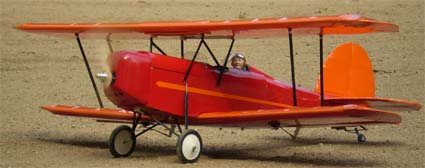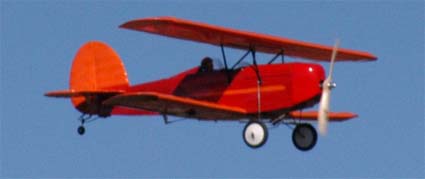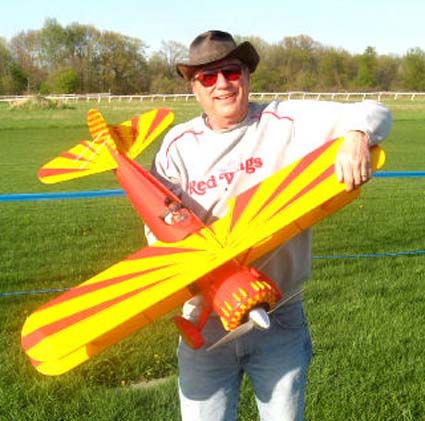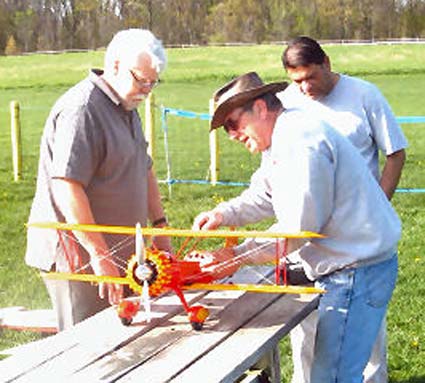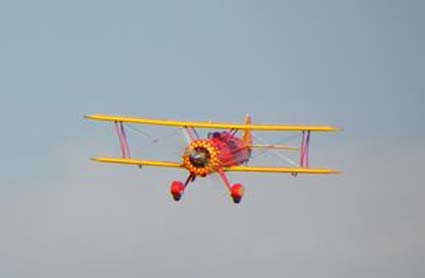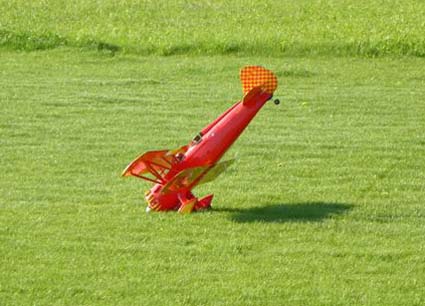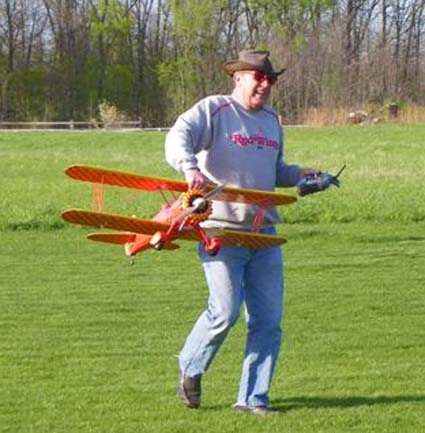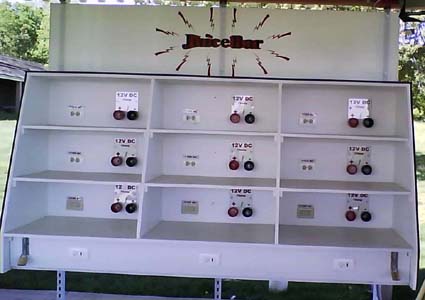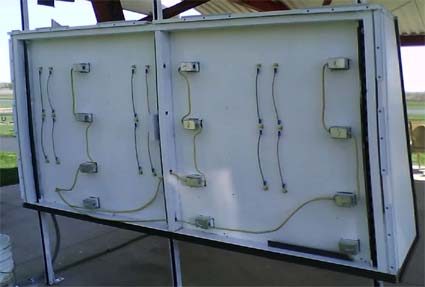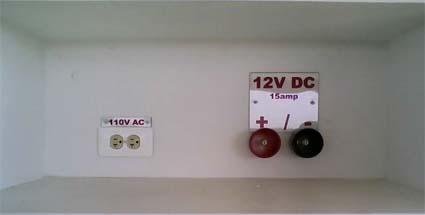 |
Flying High With Electric Power!
The Ampeer ON-LINE!
Fly the Future - Fly Electric! |
Site Table of Contents
| President: | Vice-President: | Secretary/Treasurer: |
| Ken Myers | Richard Utkan | Rick Sawicki |
| 1911 Bradshaw Ct. | 240 Cabinet | 5089 Ledgewood Ct. W. |
| Commerce Twp., MI 48390 | Milford, MI 48381 | Commerce Twp., MI 48382 |
| (248) 669-8124 | (248) 685-1705 | 248.685.7056 |
 | ||
| Board of Directors: | Board of Directors: | Ampeer Editor |
| David Stacer | Jack Lemon | Ken Myers |
| 16575 Brookland Blvd. | 8908 Sandy Ridge Dr. | 1911 Bradshaw Ct. |
| Northville, MI 48167 | White Lake, MI 48386 | Walled Lake, MI 48390 |
| 248.924.2324 | 248.698.4683 | 248.669.8124 |
| Mailed Ampeer subscriptions are no longer available | ||
| The Next Flying Meeting:
Date: Saturday, June 19 Time: 10:00 a.m. Place: Midwest 7 Mile Rd. Flying Field | ||
|
From Philip Hinkle philip@frogmanproductions.com Your name was given to me by someone on the RC Groups forums online. There has been some discussion because someone had a plane go down because they lost signal on a DX7 system. I started following the thread closely because I use the DX6i and AR6200 in my aerial photo plane with a 900mhz downlink. Someone pointed me to your Feb/March newsletters where some of the Spektrum issues were discussed. I did a bunch of research that included reading your newsletters and also scouring the Spektrum site to make sure my precious plane was setup properly. I learned a lot in the process. I posted what I learned and what I found with my own setup that seemed a little strange to me and even called Spektrum about it. They were going to discuss with an engineer and get back but haven't yet.
You can see what was being discussed on the forum starting at this link. It is sort of off topic for the thread it is in and you have to weed through a few posts to uncover all that we discussed. Toward the end I go into detail about what I discovered and my conversation with Spektrum. It would be easier to post a link than to try and explain it all. Here is where the discussion started where someone's plane crashed because of lost signal.
www.rcgroups.com/forums/showthread.php?t=1024238&page=31 Thanks,
The Rufe Is Done
Robert sent this great photo, but no details. I still had to share it with you. How about some details Robert? 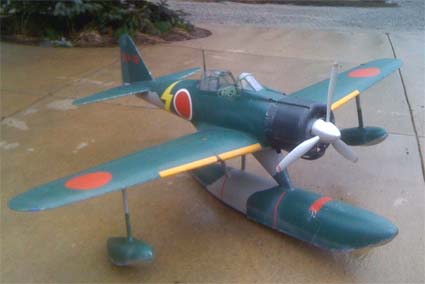 A WACO 10 Preview
Here are a few pictures of my own design WACO 10, vintage 1927. It has a wingspan of 44 inches and uses a Himax outrunner for power. It is a great flyer at 50 oz. with a 4-cell "A123" 2300mAh pack. It should be a construction article in Model Aviation in a couple months.
The Details:
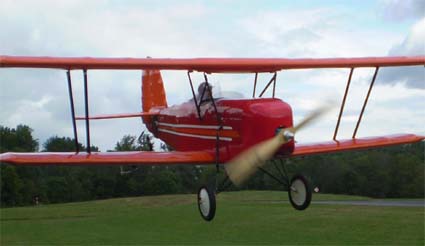
Put This One On Your Event Schedule!
The Balsa Butchers will once again be hosting the "Keith Shaw Birthday Party Electric Fly-In" at their field near Coldwater, MI. The event will take place on June 5 and 6, 2010.
|
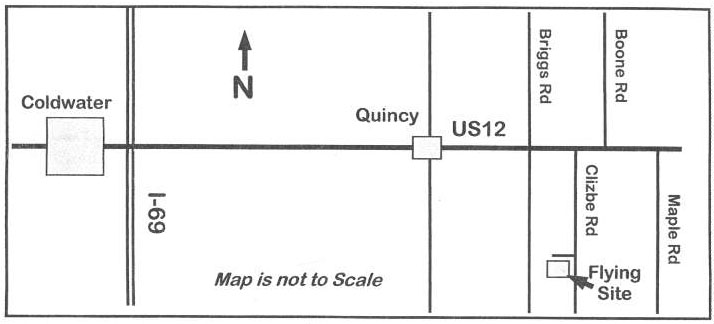
|
I love this meet. There is a lot of laid back flying with some of the Midwest's best pilots, Electric Flight Designers, Builders and Authors. I wouldn't miss it! It is a lot of fun for everyone with an interest in electric flight. KM Information Regarding the 2010 Mid-Ammerica Electric Flies The 2010 Mid-America Electric Flies (Mid-Am) will be held on July 10 & 11 at the MRCS 7 mile Rd. flying field in Salem Twp., MI. "A123" 2300mAh Pack for a Geared AstroFlight 40 cobalt
Hi Ken, Noticed your website and wanted to make an inquiry. I did quite a bit of e-modeling over the years but set it aside over the last 8 years or so. One of the older applications I have is a large old-timer (120") that I powered with an AstroFlight geared 40, RevUp 13x8 prop, Jomar ESC on 18 cells. It flew great then, slow but majestic. Any reason to change the hardware at this point given the upgrade in technology? In particular, I need to replace the batteries as I can't find the sticks I used then. I'm thinking NiMH will be the least expensive but provide way better durations than the old Nicads I used. Maybe 3000mah. Any thoughts? Anyone still using the AstroFlight gear? Thanks,
Hi Jeff, You can use NiMH 3000mAh cells. Your plane can certainly handle the weight without a problem. I just checked www.cheapbatterypacks.com and found the price to be $3.00 each for Elite 3300mAh cells, so the cells for a single pack would be $54.
JK: I've also noted a six-cell 5000mah pack per the url below...
KM: Many folks like the ZIPPY Flightmax 5000mAh 6S1P 25C that your link points to. It is definitely "priced right" and would work for you.
JK: Been reading, Ken. Lotsa options. So a question. Do you have recommendations for a charger given the 7S "A123" option? I see the FMA Multi-4 is popular but doesn't look like it can do to 6+ cell configuration. I see a used AstroFlight 112 plus a power supply for just a few bucks on eBay. That would require a charge terminator, perhaps. But if you were starting from scratch for charger, what would you recommend for this configuration. Would be nice if it included a balancer. KM: An AstroFlight 112PK with a Terminator II and an AstroFlight Blinky "A123" balancer would work for your purposes and definitely be the cheapest route to go. JK: Never mind. I found your reference below.
KM: Thanks for showing me that. I have to get into that article and get that changed ASAP! That is no longer my recommendation at all.
JK: Maybe several more questions (and you can ignore at any time if I've used up my "good will" quota KM: Nope, never used up.
JK: Just put a new Spectrum DSM receiver in the big Clipper; everything checks fine along with the motor after being hung up on the rafters for 14 years! The only thing that didn't fire up was the old Jomar ESC. I will still debug to see if it is wiring somewhere, but can I ask your recommendations on a suitable contemporary replacement ESC for this application (geared AstroFlight 40 on 7s "A123"), preferably with BEC?
KM: Well, I believe this is where the rub is! Dog gone it. I've checked every supplier I can think of for a high voltage brushed controller, and as far as I can tell, they just don't exist anymore. I've got a Jomar SC-6 out on loan to a fellow, but he's still actually using it, so that doesn't do you any good. I've got several Jomar SC-4 and SM-4 controllers still in good working order if you need one of them.
JK: And finally, if I go the older AF 112 route, I noted the specifications for the AF Blinky for "A123" reads, "The balancer accepts 1 to 6 cell 123 battery packs." What does this mean for the seven-cell "A123" we have been discussing? And I'm just coming up to speed on the balancer thing, so maybe it can be done "by cell" versus the whole pack. But can the Blinky adapt to a seven-cell configuration?
KM: The AstroFlight Blinky for "A123" can do more than 6 cells, but only 6 cells at a time. For your 7 cell pack you would insert the Blinky into the first seven holes in the balance connector (there is always one more hole than number of cells), let the Blinky balance those 6 cells and then move the Blinky over 1 hole to finish up the last cell balancing it to the five cells from the previous balance. Honestly, it is not complicated at all. Since "A123" packs don't need balancing each time they are used, this really is no big deal at all.
JK: So Keith Shaw must be using an old Jomar as well in his AF brushed applications?
KM: Yep, and he probably has a few other brands as well like AstroFlight.
JK: Well here's something fascinating. I went through my old drawer of Jomar stuff and came up with a Jomar Maxcell Throttle completely new out-of-the box!!! I think it was to be used with an AF 90 that I was preparing for some equally big beast. Anyway, this should do the trick. It has stayed nice and dry all these years. I will mess about and see what's up.
First Flights of the Super Stearman
Thursday, April 22, 2010
Once I felt that flying speed had been reached, which was nowhere near full throttle, I pulled back lightly on the elevator stick and the plane rose into a nice climbing attitude. The plane wanted to roll, not yaw, left, so I added right aileron trim until it was flying level. I added a bit more throttle along with a couple of clicks of down trim and it was flying very nicely at a moderate speed. As one of the folks watching said, "That's a very smooth flying plane."
I flew some gentle circuits and horizontal figure eights. The fore-and-aft (CG) balance seemed just "perfect." It "felt" and looked just right. On several passes down the field, I went to full throttle. Of course it wanted to climb with its flat-bottomed airfoil, but the climb was never too extreme. The control throws also seemed just fine for this first flight. I did have the ailerons on "low rate", but low rate was the 3/4" each way recommended in the manual. Almost all turns were made using ailerons and elevator without coordinating in any rudder. There really was hardly any noticeable "nose dropping", even at the relatively slow speed the plane was flying at.
After landing, I decided not to take a second flight and make the required changes at home, since my student pilot was waiting for more help and dusk approaching.
On Friday morning, I wanted to figure out why the right aileron correction was needed. I had NOT done a static lateral balance, which I usually do. Sure enough, the left "wing" was heavier. It took three 8D 2-1/2" Finishing Nails with their heads removed (weighing 6.3g/0.22 oz.) to get a level static lateral balance. I drilled two 1/16" holes into the top right leading edge near the wing tip where the wood was thick enough for the nails and one in a similar position in the bottom wing. I glued and inserted the nails into the holes and covered the exposed nails with small patches of covering.
On Wednesday, April 28, I got out to the field and did three more flights on the Super Stearman. I found that I had corrected the "excessive" right aileron trim problem. I also had a chance to do the dive test several times to check the CG and found the plane to be neutrally stable, so the CG is right on.
The wind wasn't as calm as reported and constantly shifting at about 9 mph, but overall all flights were good, and I've been able to "plant" it on the runway with no nose over.
The weather finally cooperated again on the evening of Thursday, May 6 and I was able to get out and get three more flights on the Super Stearman. I'm getting a pretty good handle on its flight characteristics.
A short video taken during the first flight is at
The conversion thread and more info at
Thanks to EFO members Rick Sawicki and James Maughan for the photos and video of the maiden flight.
A Classy Charging Station
I thought Ampeer readers might like to see how we did it.
We are fortunate to have 110 ac at the field. The final design was a nine position charging station with 110ac and 12v dc at all stations. The 12v dc is supplied by three Iota DLS 55 power supplies. Each power supply supports three positions and has an on/off switch; this lets us run only as many as we need. The entire system is controlled by a master timer that turns the power on in the morning and off at night (after all, we MIGHT have a forgetful user who leaves it on when they are done).
The 12v posts are threaded brass rod with a 3.2mm hole. This allows for just about any type of charger connectors. Each post is set in a protective cap, which is clearly marked and colored for polarity. In other words we have done all that we can to prevent short circuits (but Murphy still lives and somebody will figure out how to do it).
|
To Reach Ken Myers, you can land mail to the address at the top of the page. My E-mail
address is:
KMyersEFO@theampeer.org
EFO WEBsite
